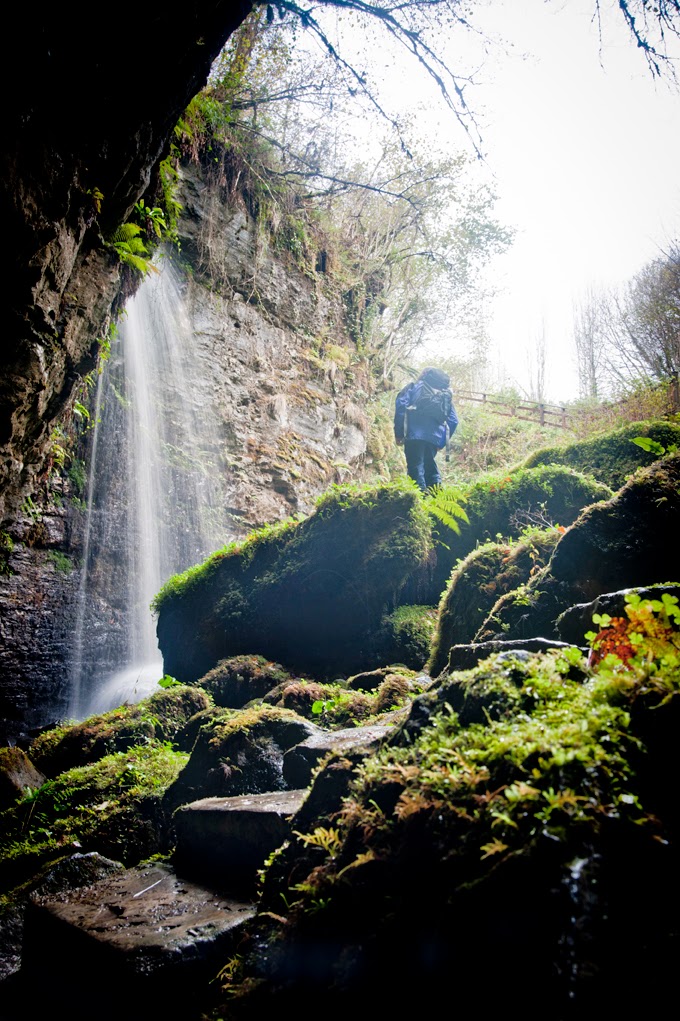 |
| Northern Ireland : The Real Westeros |
This stunning geology hasn't gone unnoticed by the TV and film industry and many locations across Northern Ireland have been the settings for some high profile filming. 'Dracula Untold', released in October 2014, was filmed at numerous locations including at the Giant's Causeway's famous basalt columns, and at Scrabo Country Park, known for its beautiful pink sandstone used in many local buildings. The recent BBC drama 'The Fall' whilst based in Belfast, used the surrounding Belfast Hills as the backdrop for many of its more sinister scenes easily recognised by the characteristic layers of white limestone, overlain by black basalt.
 |
| Carrickarede viewed from the mainland |
Starting in the north-west, the stunning beach of Downhill is the location for Dragonstone chosen because of its dramatic basalt cliffs that tower over the beach below. Formed from a series of lava flows around 60 million years ago, the basalt cliffs are notoriously unstable at this location causing a serious engineering headache due to the presence of a train line at the base of the cliff.
Following the famous Causeway Coastal route to the east, the next filming location is Larrybane, or The Stormlands to Game of Thrones fans. Larrybane translates from the Irish as 'white headland' and this classic outcrop is formed from Cretaceous white limestone, formed around 80 million years ago, and more commonly known as chalk. Just along from Larrybane is Carrickarede, an explosive volcanic vent that would have burst its way through the limestone at the beginning of the Palaeogene period around 60 million years ago and well known for its nail-biting rope bridge.
 |
| Slemish Mountain |
As you continue along the Causeway Coastal route, the village of Cushendun is next on the list of film locations. Again, a spot for many geology students every year, if nothing else for a break from the limestone and basalt that dominates this area. The caves at Cushendun are conglomerate, a rock made up of numerous large pebbles that were carried here from a desert upland area by flash floods over 400 million years ago. The caves are where Melisandre (or the Red Witch) gave birth to the shadow baby in one of the more fantastical scenes in the series.
 |
| Magheramorne Quarry with King's Landing in the foreground and Castle Black perched on top of the white limestone with black basalt behind |
One of the sites that you won't find on any of the tourist maps is Magheramorne Quarry, just south of Larne. This disused quarry was earmarked for development as an eco-village before the recession but has found a new lease of life as the set for King's Landing and Castle Black in Game of Thrones. The quarry was worked for white limestone, and it has the typical overlying basalt geology. In between the two is the clay-with-flints deposit, originally thought of as being a residual weathering product, and later as a volcaniclastic deposit. Both of these theories are being revisited so check back for further updates. Because of the importance of the clay-with-flints, this site is being designated as an Area of Special Scientific Interest (ASSI) which allowed for BGS scientists to gain access to the quarry.
 |
| Landscapes surrounding Castle Ward |
The last stop, and the most westerly point for filming is Pollnagollum Cave located in the Marble Arch Caves Global Geopark. The cave can be found in Belmore Forest and was used as a Victorian show caves long before the Marble Arch Caves were even dreamt of. Access to the cave is down through a collapsed cave roof, and like the majority of the bedrock in this part of Co. Fermanagh they are formed out of Carboniferous limestone that was deposited around 340 million years ago.
 |
| Pollnagollum Cave |
For further information on any of the geological sites mentioned then contact Dr Kirstin Lemon at klem@bgs.ac.uk

Comments